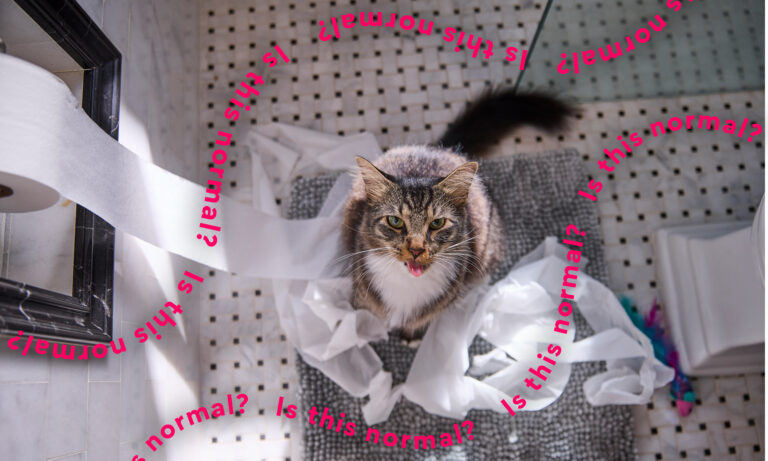There’s no doubt that we love our pets. Most of us can hardly remember what our lives looked like before they moved in and took over. But we’re also so busy, bustling and on-the-go that we can miss opportunities to have more meaningful moments with them. Perhaps now’s the ideal time to make that change. If circumstances are leaving you stressed and anxious, a bit of furry (or feathery depending on your pet pal) therapy can go along way to help you get centered and find some calm.
“The thing with pets is that they’re consistent,” says Prairie Conlon, LMHP (Licensed Mental Health Professional) and Clinical Director of Therapetic, an online tele-health platform. “Whether you’re moving, changing jobs, get a new boyfriend or girlfriend, they’re always there. The consistency can be really grounding for people.”
That’s especially true in these times of social distancing, she adds. “One of the things I’ve been telling clients is to reframe things. How about you look at this from your animal’s perspective? How is your dog feeling about the quarantine?” Chances are, she says, that your pet loves spending extra time with you. “So, let’s look at it from that perspective: This is amazing!”
When it comes to your mental health, pets really can be some of the best medicine. Here are five science-based ways to connect with your pets AND slow your roll.
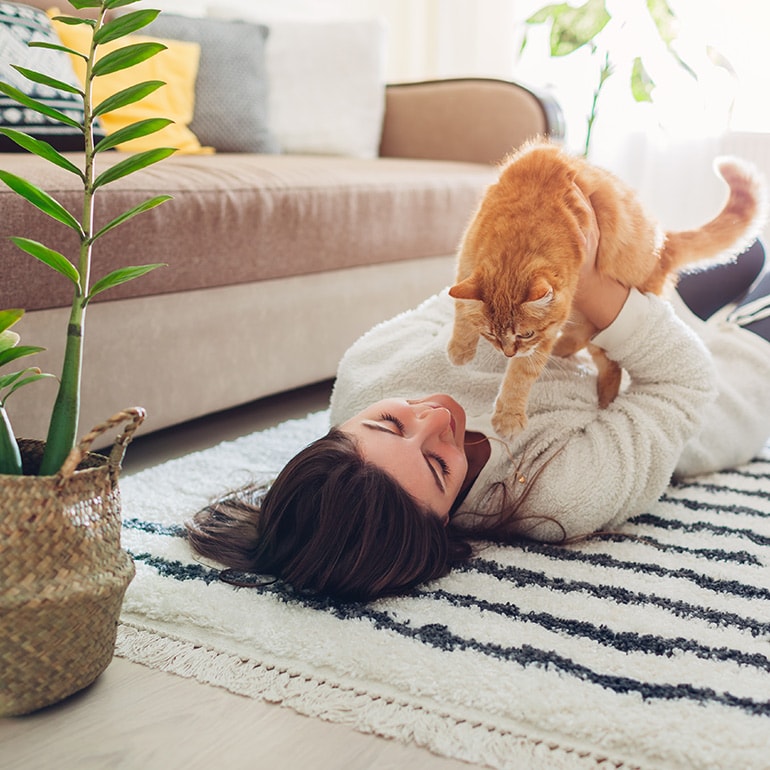
iStock.com/maryviolet
1
Talk to Them
Got troubles? Dozens of studies (including this and this) have proven what you probably already know from first-hand experience—pets are just great listeners. It’s likely you chat them up from “good boy” to “good night” on a regular basis throughout the day, but have you taken advantage of their capacity for listening by sharing what’s really on your mind?
“Loneliness is a huge thing right now in America,” Conlon says. “Yes, we have social media, but that actually lends to the problem; now you’re looking at Instagram and seeing people’s perfect lives and thinking, that’s how their life is and that’s how mine should be.” Replacing those scrolling sessions with some quality chats with your pet can make a huge difference.
Sit, stay, lie down and just talk to them. Whether or not they understand exactly what you’re saying is up for debate, but when you think about it, does it really matter? Both you and your pet are making a connection that’s satisfying to both species.
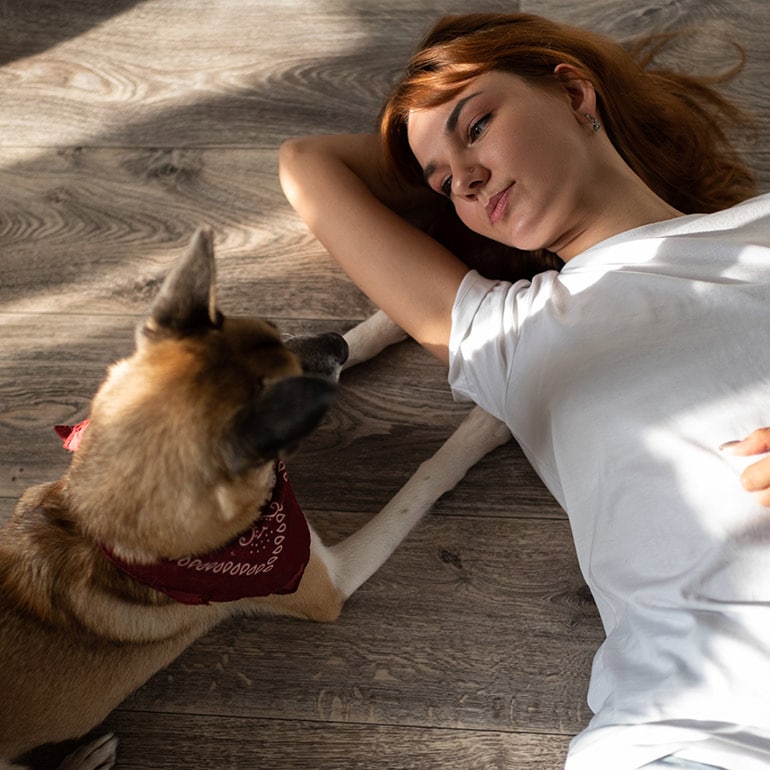
iStock.com/Niyaz_Tavkaev
2
Look Them in the Eyes
What you’ve always suspected—that something’s going on when you’re looking into your pet’s eyes—is actually true. Staring into your dog’s eyes increases levels of oxytocin, AKA the bonding hormone, in both species. Studies have shown that oxytocin acts as an antidepressant in animals, and have linked a deficit of the hormone to depression in humans.
“Think of oxytocin as the fuzzy feel-good,” Conlon says.
Need more proof that bonding with your dog gets results? Conlon points to studies that measured the varying effects of interacting with your own dog compared to a stranger’s dog and even a robot dog. “With the robot dog, the [oxytocin] levels actually went down.” (Yikes.) “With a stranger’s dog, things were about average, no significant boost,” she says. “But with their own dog, just 15 minutes increased oxytocin by 300 percent. You can’t take a pill that does that without it knocking you flat out!”
Go ahead, gaze deeply into that friendly, furry face. Both you and your pet will be better off.
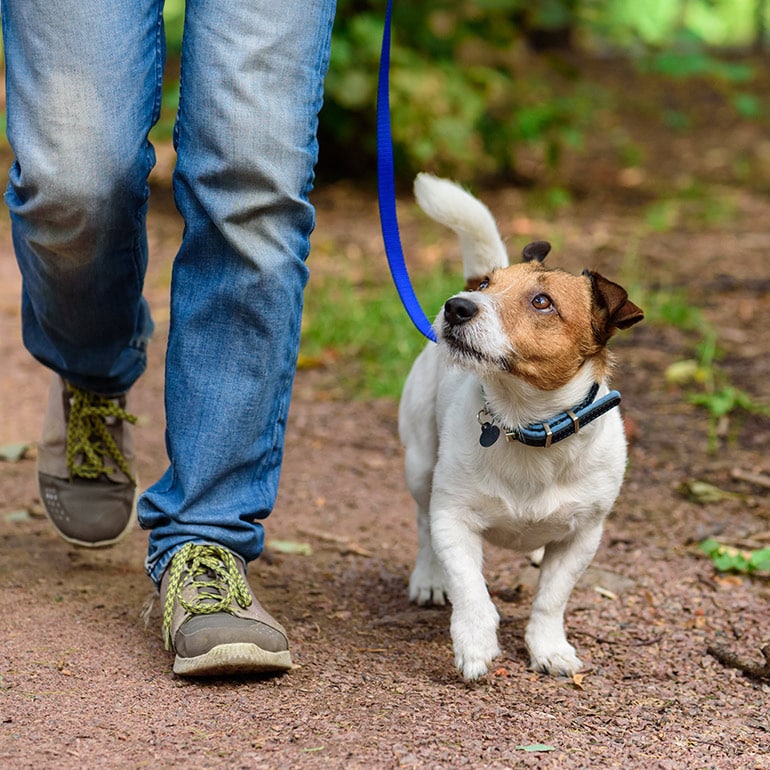
iStock.com/alexei_tm
3
Read Their Signals
Pets are always communicating with you—even if you don’t realize it. Dogs, for example, use everything from body language to eye contact to scents they release to let you know what’s happening in their minds. You just have to pay attention to read the signs. So why not use this time to figure out your pet? When you take them for a walk, put your phone away. When you’re working from home, take breaks to observe your cat’s funny habits and think about the reasons behind them. (Your cat might be trying to tell you they love you!) It’s all in service of building a stronger bond with your pet, and reaping the rewards that follow.
Even if you can’t decipher the meaning behind your cat’s sassy swish of the tail, scheduling breaks to care for your pet can be a welcome distraction from the stressors of the outside world. When you give your attention to your pet, Conlon says, “it’s like rerouting everything in your brain.” Focusing on a task like walking or playing can interrupt those negative thought patterns that sometimes cycle through our minds, she says. “If you’re finding that watching the news is overwhelming, it might be time to take the dog for a walk or do some exercises.”

iStock.com/Pekic
4
Pet Them—Like, a Lot
Feeling extra stressed lately? Us too. But according to science, petting an animal can take the edge off. Researchers at Washington State University found that just 10 minutes of petting and interacting with cats and dogs significantly reduced students’ levels of cortisol, a major stress hormone. Other studies have shown that petting dogs can lower humans’ blood pressure. And remember that study Conlon mentioned, the one that showed looking into your pet’s eyes exponentially increases levels of “fuzzy, feel-good” oxytocin? The same thing applies to petting them, science says.
That’s right: When you reach out and touch your pet, you’re actually doing your own body (and mind) a favor. And as an added bonus, social distancing means no one’s around to judge you for all the pet hair on your clothes.
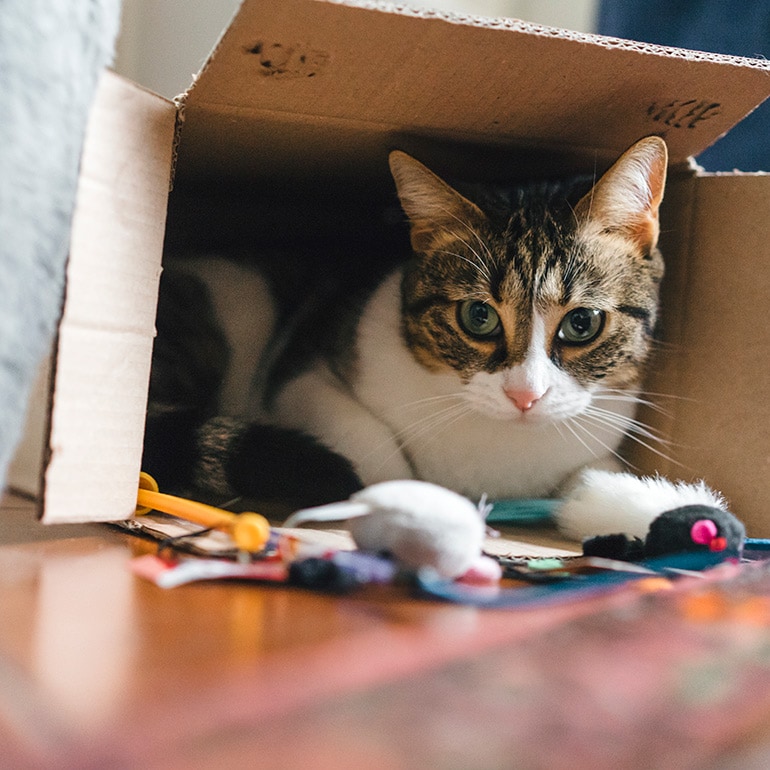
iStock.com/FilippoBacci
5
Exercise Their Mind
Before you treat your boredom with another Netflix binge, try this instead: Engage with your pet in play that stimulates their brain. Getting down on the floor and doing a puzzle with your pet has lasting value—both for your pet and for you. Your pet will be growing their intelligence, and you’ll be reaping the rewards of play, which include increased creativity and problem-solving skills and, yes, improved emotional well-being.
It’s also a way of breaking anxiety-fueled thought patterns. “Think of it like a tornado," Conlon says. The more stressed thoughts you have, the faster it spins, picking up even more ideas to stress about. “So anything that draws your focus [away from that] can be a healthy distraction,” she says. “If we don’t let ourselves be distracted, sometimes we can dissociate and get stuck in this cycle.”
Go ahead—give your mood a boost while you give your pet’s brain a workout. In addition to store-bought puzzles and games for dogs and for cats, Conlon says she and her family have been taking breaks by making their own food puzzles for their dogs, and building mazes for their cats out of old cardboard boxes.
Are you sensing a theme here? All these activities are ways to build and maintain your relationship with your pet.
“Take advantage of that bond,” Conlon says. “[Don’t think], I’m cooped up in here, this is horrible. Think, Hey, I actually get to spend time with my dog and they think this is the most amazing thing ever. Reframe it using them as a healthy distraction.”
With your pet by your side, you'll be feeling more zen before you know it. Peace out!
Share:


